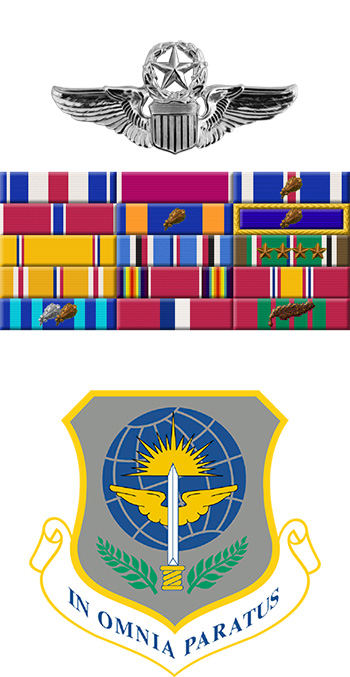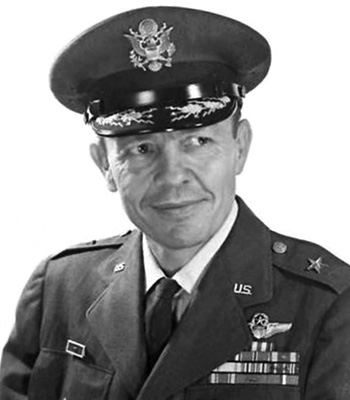
|
Harold W. Bowman |
 |
|||
| Rank, Service | ||||
Brigadier General O-7, U.S. Air Force |
||||
| Veteran of: | ||||
|
||||
| Tribute: | ||||
Harold Bowman was born on February 12, 1903, in Waverly, Nebraska. He was commissioned a 2d Lt in the U.S. Army through the Army ROTC program at the University of California on May 1, 1928, and completed flight training and was awarded his pilot wings on June 28, 1929. Between 1929 and 1938, Capt Bowman served as a pilot and public relations officer at Rockwell Field and March Fields, California, in the Philippines, and at various other bases before serving as the director of the Air Corps Motion Picture Laboratory and the Army Aeronautical Museum at Wright Field, Ohio, from 1938 to November 1939. His next assignment was as the Assistant Executive to the Chief of the Air Corps in Washington, D.C., from November 1939 to November 1942, followed by service as Assistant Director in the Directorate of Military Requirements in Washington, D.C., from November 1942 to June 1943. Col Bowman served as a B-17 Flying Fortress pilot and Commander of the 401st Bomb Group at Geiger Field, Washington, from June to July 1943, at Great Falls Army Air Base, Montana, from July to October 1943, and at USAAF Station 128 in England from November 1943 to December 1944. His next assignment was as Deputy Chief of Staff for Public Relations with Headquarters U.S. Strategic Air Forces in Europe from December 1944 to June 1945, and then as Deputy Chief of Staff for Public Relations for the Air Corps, and as Director of Information Services with Headquarters Army Air Forces in Washington, D.C., from June 1945 to September 1947. He attended National War College at Fort McNair, Washington, D.C., from September 1947 to July 1948, and then served as Chief of Staff, Vice Commander, and Deputy for Personnel of 9th Air Force at Greenville AFB, South Carolina, and then at Langley AFB, Virginia, from July 1948 to July 1951. Gen Bowman next served as Special Assistant to the Commanding General of Tactical Air Command at Langley AFB from July to September 1951, followed by service as Commander of the 62nd Troop Carrier Wing at McCord AFB and then at Larsen AFB, Washington, from September 1951 to September 1954. During this time he also served as Base Commander of Larsen AFB. He served as Deputy Director for Plans with U.S. European Command in Paris, France, from September 1954 to June 1957, and then as Deputy Commandant of the Armed Forces Staff College in Norfolk, Virginia, from July 1957 until his retirement from the Air Force on December 1, 1959. Harold Bowman died on October 23, 1994, and was buried at the Riverside Memorial Park in Tequesta, Florida. |
||||
|
||||

